Amazing 1934 Singer Nine van; it’s the sole survivor!
Posted by Chris Graham on 25th May 2023
Brian Culpan tells the remarkable story of this 1934 Singer Nine van – one of just six built – that’s now owned by James and Louise Tempest.
Photographs: Anita Waters/James Tempest
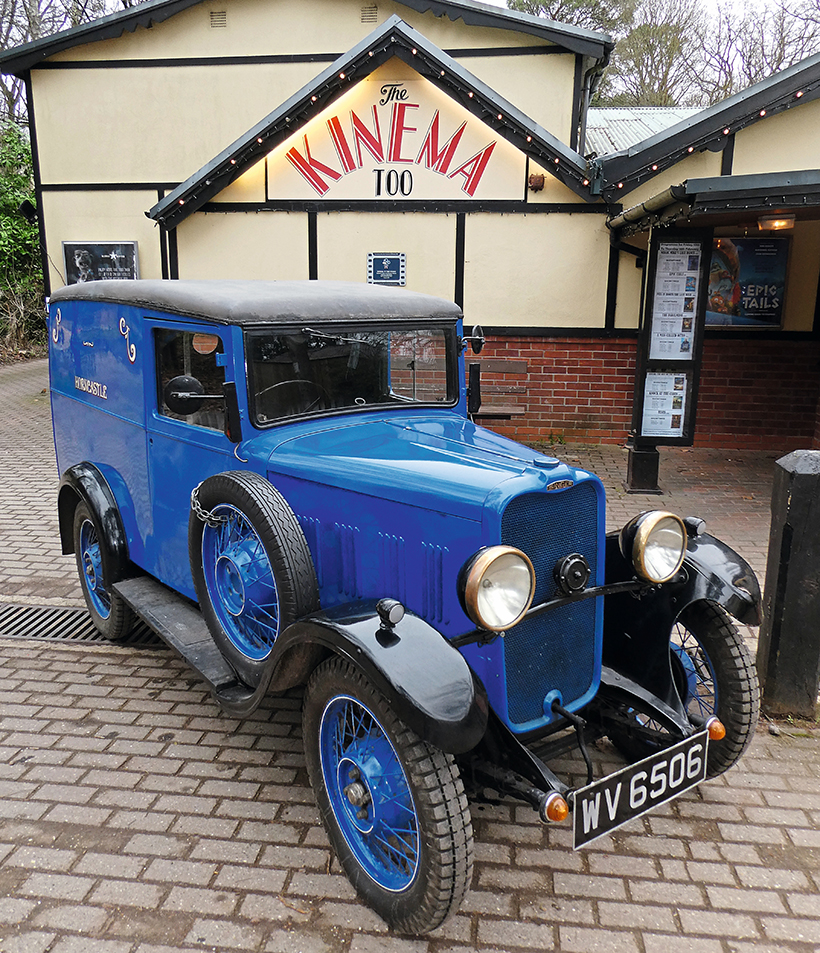
This is the only surviving 5/7cwt Singer Nine van, and is currently owned by James and Louise Tempest.
This, sole surviving 5/7cwt Singer Nine van, was originally bought early in 1934 by the gentlemen’s outfitter and tailoring, business of Samuel Barrett Cole of 5&6 Regent Street, Swindon, and was registered on November 7th as WV 6506 with Wiltshire County Council. Traditionally, commercials left the factory with their wings and wheels finished in black, and the body left in grey primer for the new owner to have brush-painted in the gloss colour of their choice. So, it duly got blue bodywork and a cream-painted radiator grille (only saloons came with that chromed). It was used for just four years, making local, light deliveries for the shop before being sold to a local, general building contractor, Harry Kilminster.
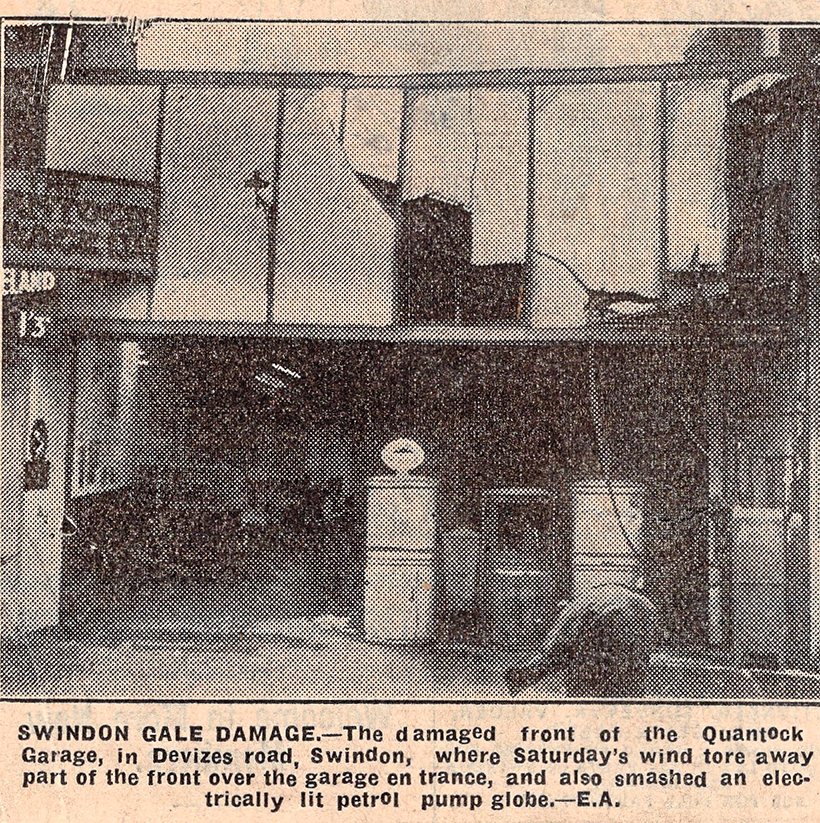
Hard to make out, but the van is in the back of the gale-damaged Quantock Garage, Devizes Road, Swinton. The wind tore away part of the front over the garage entrance and also smashed an electrically lit petrol pump globe.
Repainted with a green body and yellow waistband and wheels, a rather rougher life followed, with the vehicle being used to make site visits and deliver materials and men allocated to small painting and decorating jobs, and building reconstruction. This type of work continued throughout the war years, during which the van was taken to London to help with making war-damaged buildings safe and habitable again. At that time, all commercial vehicles leaving the capital empty were commandeered to remove building rubble to the city outskirts, and this small van had to take part in that. The van continued to work well into 1949; when it again changed hands, but was kept ‘in the family’ – the new owner was Harry’s brother, Frederick!
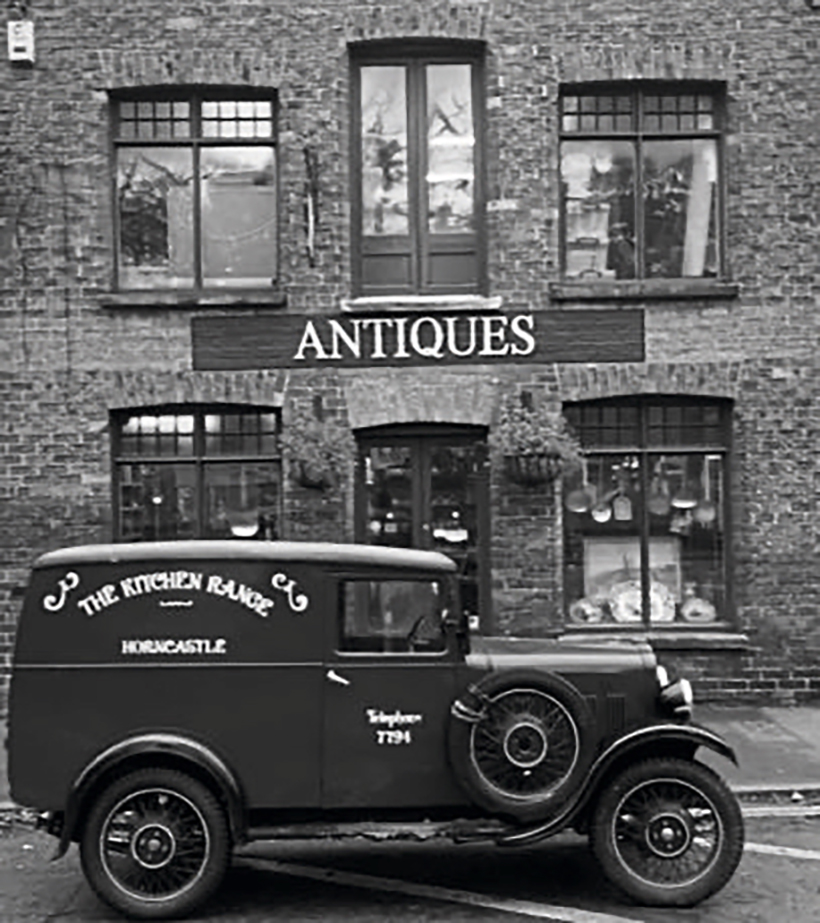
The Singer pictured outside Laurence Shaw Antiques in Horncastle, lettered with The Kitchen Range.
He ran a small garage called Brittany’s on Devizes Road, and the van was used as a general runabout both for the garage and privately. Having survived the London blitz, one night, when the van was parked inside the garage, beside the rubber-vulcanizing machine used to repair tyres and inner tubes, it narrowly avoided being destroyed. The machine had been left on by the apprentice, overheated, caught alight and started a fire. The local fire brigade acted swiftly to put out the blaze and saved the van. It was able to continue working until 1963; when it was considered to be completely worn out, Fred was reluctant to sell the van – so it was laid up on wooden blocks in a corner of the garage. There it quietly rested and slowly deteriorated until 1968, when Fred’s grand-nephew, Thomas, remembered it.
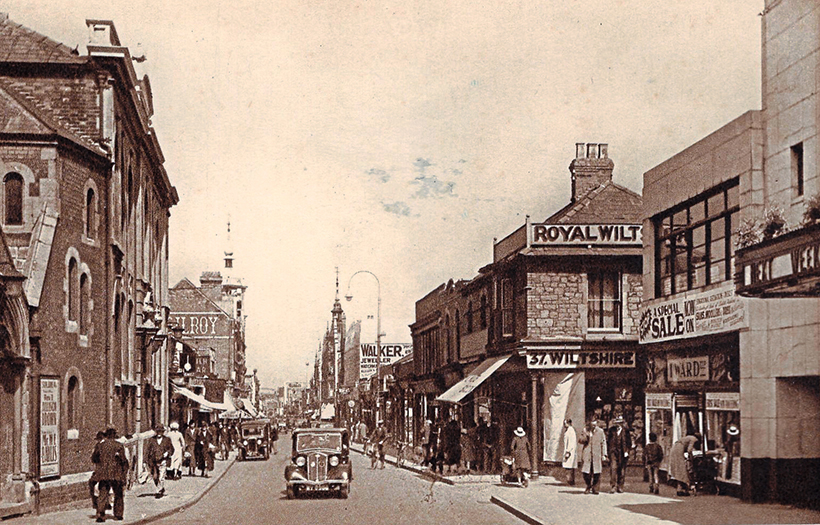
A 1938 postcard with the van set back on the left-hand side, outside its first owner’s shop, SB Cole.
Thomas had recently become interested in old, commercial vehicles after visiting a rally, and Fred was willing to sell the van since, once again, it would be staying in the family. It still had its 1963 ‘C’ licence for carrying goods, its paintwork was a little dull, and surface rust had begun to appear. The tyres and running boards were the only essential items needing replacement. Finally, it was repainted but remained in Harry the builder’s colours. While attending its first rally, the radiator began boiling over, and it was feared that a full engine renovation might be needed. Upon stripping down, however, only the timing chains and camshaft for the overhead valves were in need of replacement.
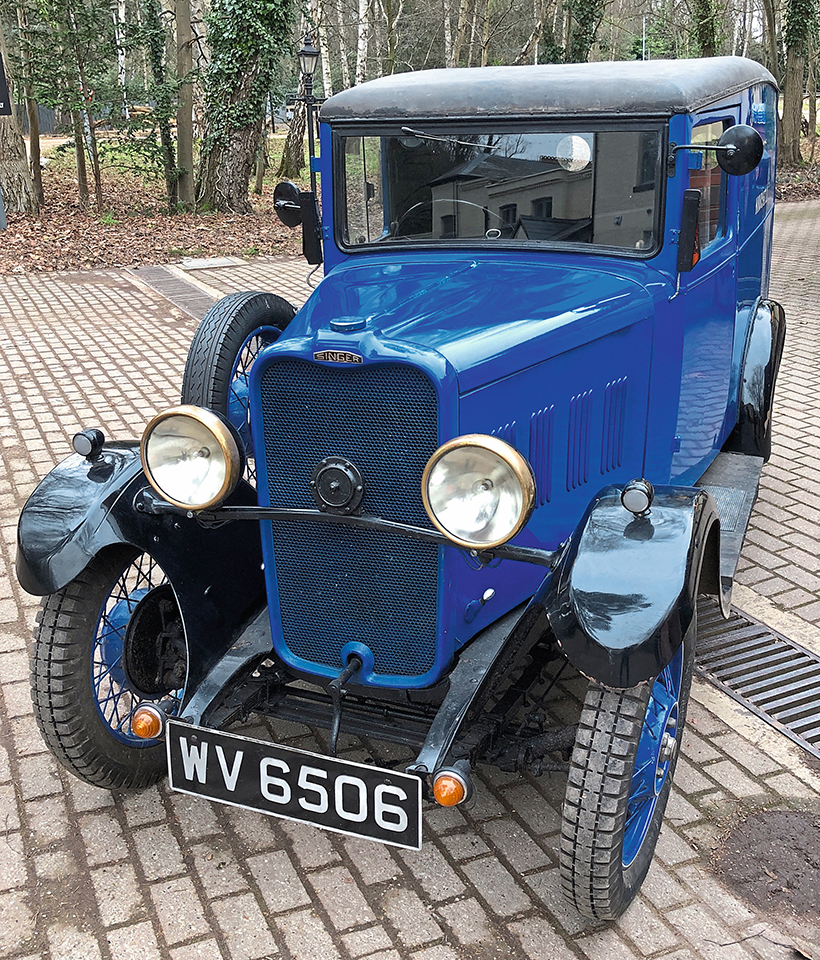
In 1970, it was again ‘resting’; having been put into storage, Thomas kept it at his parents’ house at Wansborough, near Swindon. Even when, in 1974, he moved to work in Bournemouth, the little van stayed in Wansborough – still out of use! Thomas realised that it ought to be used, and so reluctantly advertised it for sale very early in 1977, it was bought by Laurence Shaw and transported to Woodall Spa in Lincolnshire. The new owner – his love of old things having got him involved in the antiques business – was also an enthusiastic Singer owner. Over many years he had built up a large collection featuring a wide range of models of the marque. Behind his antiques shop was a large garage in which were stored no fewer than nine Singer vehicles – in three neat rows of three. The old van was soon repainted dark blue with black wings and liveried to publicise his first wife’s new business venture, The Kitchen Range – a kitchen design and fitting service.
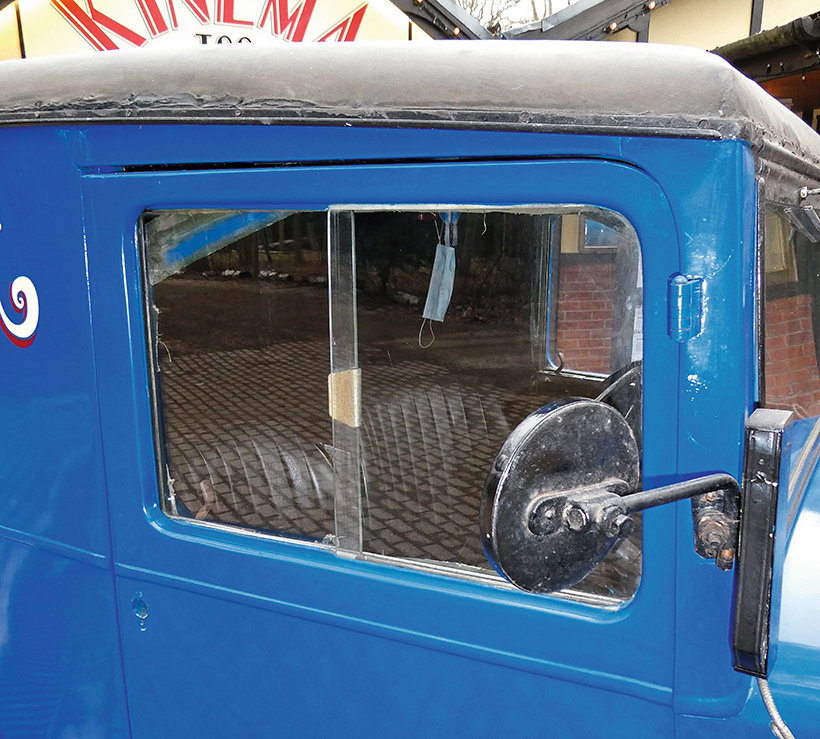
The van was still in useable condition and was taxed for 12 months. This expired on February 1st, 1978, by which stage the business had already ceased trading, so the van went back into storage for many more years. At this point it retained its excellent external appearance, still wearing its new bright blue paint. The interior had been left untouched, totally original, to some a little tatty – the seat coverings were in shreds and the cab doors’ inner sides were still untouched – paint peeling off. It’s always difficult to decide whether to restore or preserve, this van has had a little of both. Another plus point was that the woodworm that had taken up residence in the dashboard had been successfully treated.
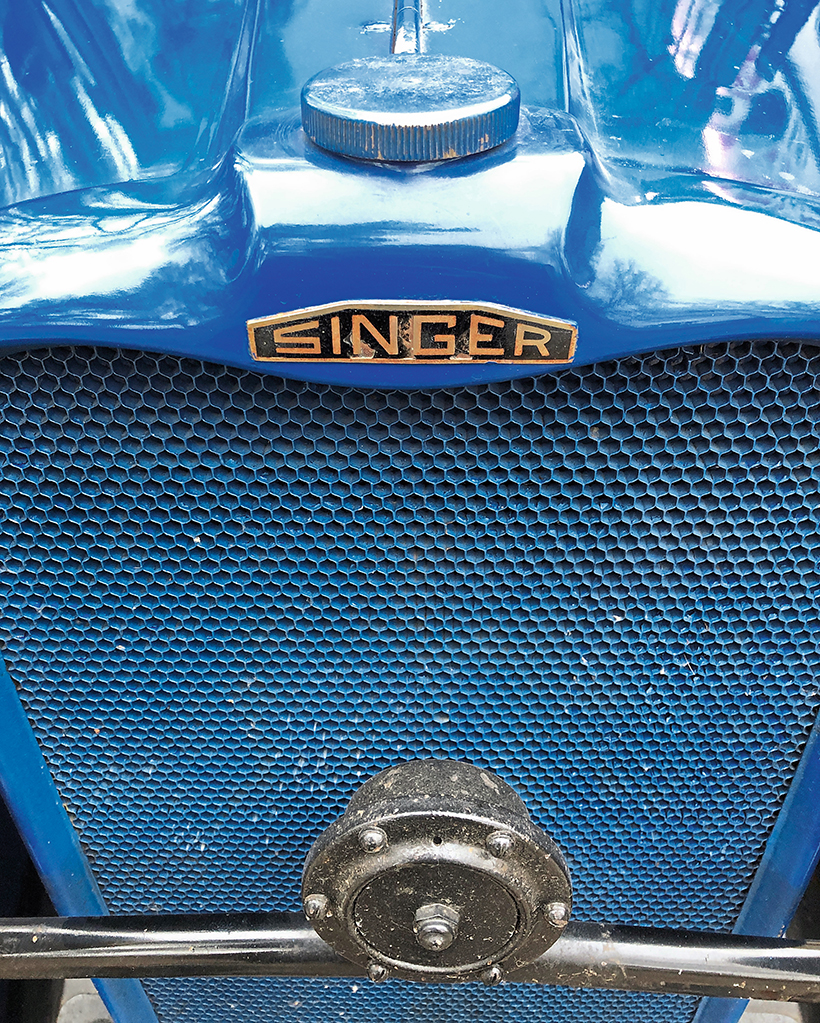
Later, following some 30 years of storage, Laurence’s taste for classic cars changed to become focused on more modern ones; the collection was being dispersed. Three vehicles were reserved for Laurence’s three sons, Nick, Leyton, and Rowland, who each got one; the van went to Nick. Later it was sold to brother Leyton; each time, James Tempest tried to buy it from a half-brother but wasn’t successful, it was eventually, in early 2016, sold out of the family to another Singer enthusiast, Stuart Bramwell from Hampshire. He re-commissioned it again and had the seats re-covered, but used it very little. Nevertheless, it was well cared for.
A few years later, September 2020, James wanted an old classic van to promote his business, and his thoughts returned once more to his step-father’s old Singer Nine van. Following extensive enquiries, he learned that Stuart had it, so he sent a casual email offering to buy it. He was amazed to receive a positive response, and was able to bring it back into the family once again.
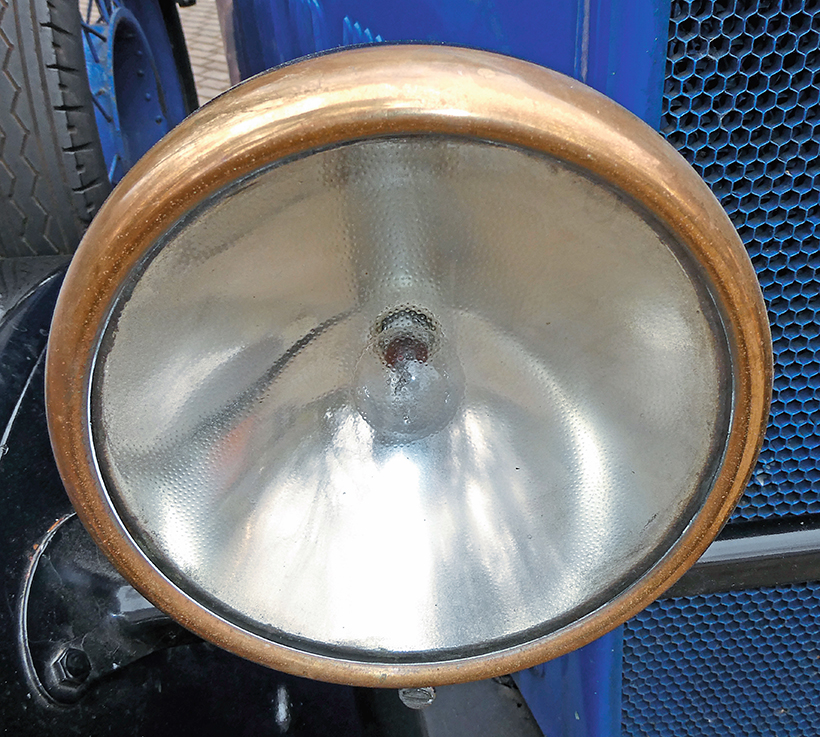
Model history
The previous model, the Junior, included a van in its range. Singer was constantly making changes to its vehicles (this probably led to its demise). This Nine van is an in-between model to plug the gap before the new model – the Bantam – came into production. Consequently, not many were made and those that were utilised components from the previous and yet-to-be-announced new models – a proper hybrid. So, James’ van has the running gear and dash from the Junior model with a new, larger engine. Few were made before the new van based on the much-improved Bantam was announced and came into production. This left the Nine and Junior vans ‘stranded on a sandbank’, saleswise.
Interior
Inside the cab it’s noticeable that this van’s handbrake is on the driver’s right. The foot pedals are laid out in true vintage pattern, with the accelerator pedal being between the other two. Recently, James found this feature of great advantage. While working, he accidentally trod on a long nail, which went right through his boot and made a nasty wound on the sole of his right foot. He hobbled about and, when it came time to return home, had great difficulty driving his modern vehicle as pressing the brake pedal was agony. Thinking about how he could possibly manage the next day, his thoughts turned to the Singer. Driving it was easy; he used the handbrake and pressing the centre accelerator was bearable. This technique of driving dates back to vintage vehicles that normally used the handbrake (going back further, this itself was a carry-over from horse-drawn vehicles), the then newly created footbrake worked on the transmission and was for ‘last resort’, emergency use.

Even if driving this delightfully vintage vehicle wasn’t enough, the driver has a range of dials to keep him (or her) busy; oil pressure, fuel and the usual speedometer (with a prominent red line at 30mph). This was to remind the driver that the Road Traffic Act of 1930 restricted small vans to 30mph at all times. In 1934, for the first time, all Singer models were fitted with ‘Splintex’ safety glass – the Continental alternative to the British Pilkingtons ‘Triplex’. The window panes consisted of a sandwich; two sheets of glass stuck together by a thin layer of plastic sheet; to prevent sharp shards forming if it shattered.
Under the bonnet the large cylindrical petrol tank takes up a lot of space, feeding the carburettor by gravity to avoid the need for a pump. No gauge is provided so, to check the contents, involves removing the cap and peering inside!
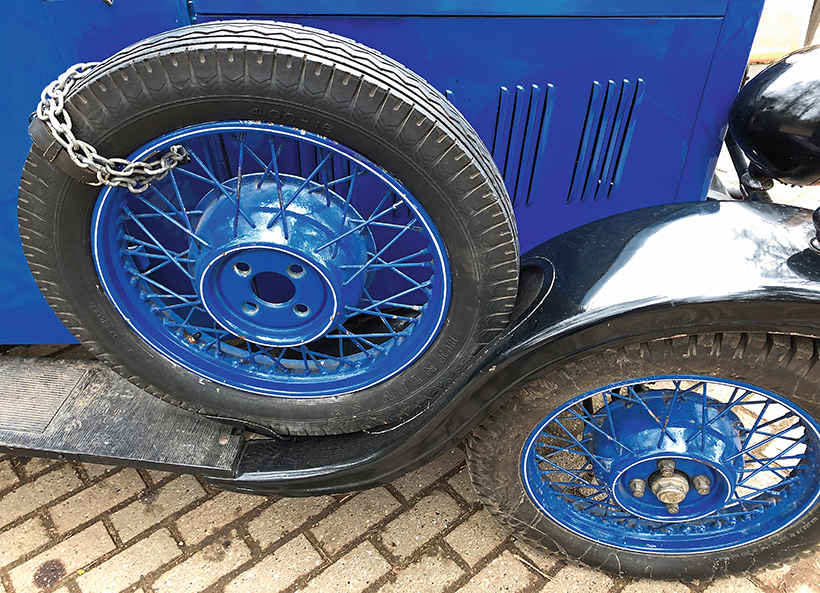
Singer history
By the 1930s, Singer Motors had expanded to become the third largest vehicle manufacturer in Britain; its cars were seen to be more upmarket than others, such as Morris and Austin.
The Singer Nine car grew out of the existing 8hp Junior model that had an 847cc ohc engine (56mm x 86mm). Around mid-1931 for the 1932 season, it was given the slightly larger 972cc, 9hp engine (the bore had been increased to 60mm), and was called the ‘Junior Special’ then, shortly afterwards, it was actually called the Nine! However, the Junior-based van wasn’t replaced by the larger-engined Nine until 1934. So, the earlier model can be recognised by the name ‘Junior’ that’s cast into its radiator cap, and two groups of vertical louvres in each side of the bonnet. The Nine has them regrouped into four lots, and the van has just a plain radiator cap. Although Singer made a wide range of vans – each one based on a car chassis – the total production was relatively small. It’s remarkable that any have survived. Only eight or nine Singer vans seem to have been preserved.
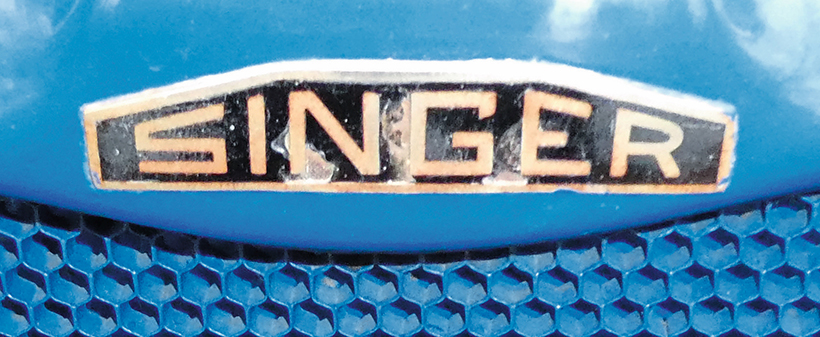
The van used front bodywork panels from the 1932 Singer Nine Deluxe saloon, this model had continued with the old bodywork (although a new model – the Special – was given a more modern style). At the front is a honeycomb radiator with a ‘Nine’ script-type badge at the top offside corner. Commercials had their sculptured grille surrounds painted body colour – cars had theirs chromed. Bonnet side ventilation was via four sets of four vertical louvres. Although saloons from about 1932 had Autovacs sucking up petrol from a rear tank, vans (all registered in 1934) had gravity petrol feed to the carb. from an under-bonnet tank, laid across the engine bay beside the scuttle bulkhead.
A modified, 8hp Junior car chassis of the mid-1920s (1926-7) was probably used for the van (it certainly has Junior car axles). It is extremely basic in plan; two slender channel-section side members tapering from back to front. A tubular cross-member supports the engine at the front, passing below and in front of the timing case, and also has the steering box clamped to it. The rear engine mount is a plate interposed between the back of the engine crankcase and the gearbox, spanning the chassis rails and forming a centre stiffener. The plate rests on a trunnion shaft with rubber-bushed mountings to the frame. Two central cross-members support the body and the rear of the frame is held together by another two tubular cross-members.
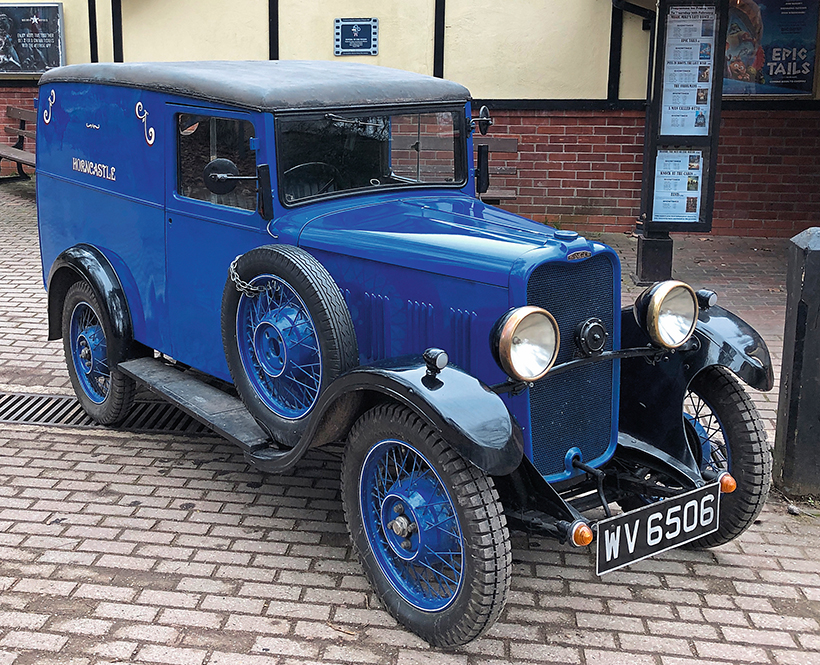
These early models required regular lubrication of several points, also the Junior axles have the old-fashioned brake ‘Perrot’ rods extending out from the front drums, actuated by linkages from the hand and foot brakes. The engine also contains a curious mixture of antiquated and advanced features. For example, the crankshaft has only two main bearings, yet the valves were operated by an overhead camshaft! The engine had a Solex side-draught carburettor, simple mushroom-shaped shield and silencer – no air cleaner. However, James had problems with it and so replaced it with an SU (Singer had fitted these at one time earlier) the old Solex fixed-jet unit has been kept. Cooled water from the radiator bottom pipe returns to the block centre via an elbow on the nearside on the Junior’s engine.
The oil pick-up pipe is in the sump; a long internal pipe led to the front of the engine to an external the gear oil pump mounted on the timing chain case. The engine has its ohc driven by a chain from the ‘half-speed’ gear, that also drives the magneto, generator and the external oil pump via bevel gears. Two inclined valves per cylinder are opened by rockers with screw tappets and adjusters – bearing directly onto the valve stem. Inlet ports are siamesed, as are the centre two exhaust ports. The crankshaft is supported on two plain white-metal bearings (no centre bearing), lubricated by the overflow oil from the camshaft on its way back to the sump. The big ends have dippers to collect oil from troughs fed by the low-pressure pump. The oil feed from the pump is divided; one feeds the chains and overhead camshaft bearings, the other goes to the oil relief valve, pressure gauge, and main bearings.
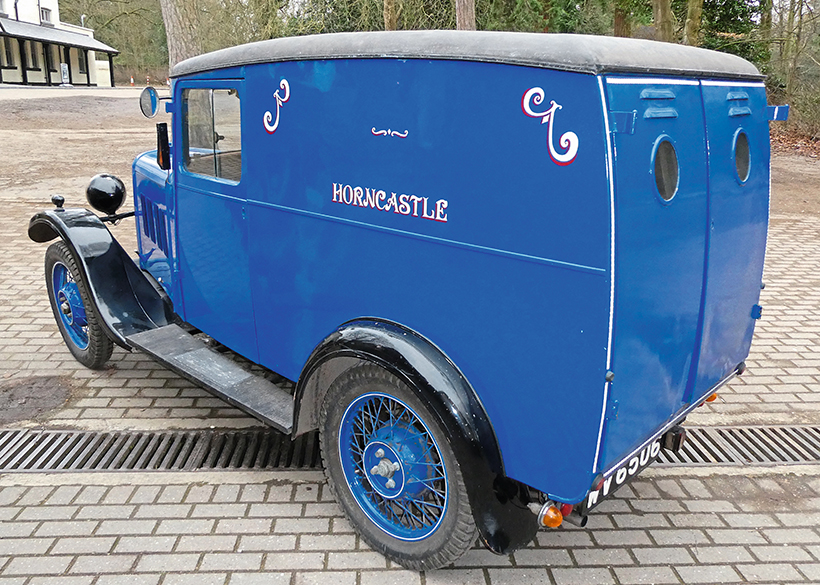
There are two chains inside the timing cover, one takes the drive from the crankshaft to the distributor and electrical generator, the other from the oil pump (double sprocket) to the overhead camshaft. A jockey wheel is incorporated in the second chain drive, and is adjustable from outside the block (by a stud and locknut behind the distributor) – some were spring-loaded to adjust automatically. The second chain is adjusted by swinging the distributor/generator unit away from the block (slots are provided). The overhead valves are operated by rocker arms from the camshaft.
Because this van has the mechanicals from 1932 models, the clutch plate hub centre doesn’t contain small cushioning coil springs, or flat springs between the linings, to ensure a smooth drive take-up. The free play adjustment is on the coupling rod that connects the pedal to the clutch operating fork. Later models would have additional adjustment on the pedal stem for pedal reach and driver comfort.

The gearbox is bolted directly to the rear of the engine, and has three speeds, central lever operating directly onto the selectors through the lid. The gear layout is typically vintage- or ‘Chinese’-style – working away from the driver as higher gears are selected. Rubber fabric-reinforced disc propeller shaft flexible joints are used, their bolt holes also reinforced with small plates each side that clamp the rubber. The solid back axle contains a spiral bevel final drive unit with straight spur gear differential.
To reduce overall height, Magna type wire wheels with their larger hubs (but smaller overall height) are fitted, with a recessed bolt fixing face, and no hubcaps. Headlamps are mounted on a slightly curved crossbar and have flat glass lenses devoid of any beam-correcting ribbing. The horn is mounted centrally on this bar.
On early 1930s models, mechanical drum brakes are fitted all round, operated by either foot or hand via rods and quadrants. To cater for the steering movements, the front ones have ‘Perrot’ shafts at their hubs – they contain small universal joints. Top speed is a modest 45mph, nevertheless, braking must be well thought-out and applied sooner than with a modern vehicle. The benefit of this low speed is a reward of 60mpg if driven carefully. James has clocked up 3,000 miles of driving this little gem.
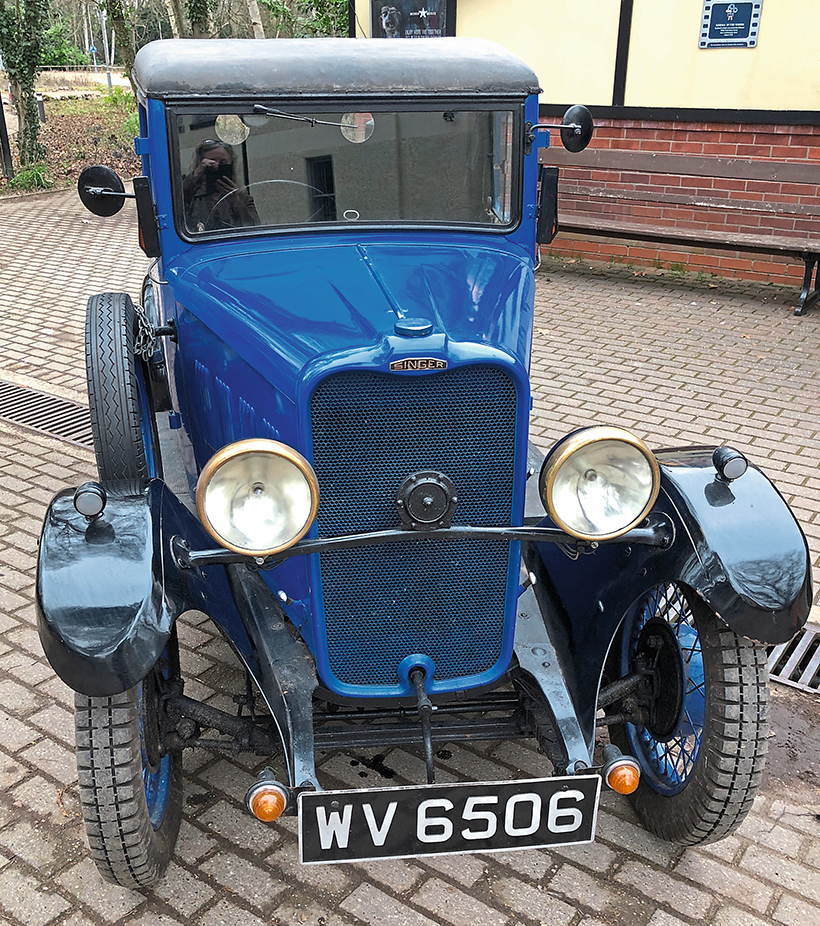
Ball sockets on the track rod and tie rod ends are spring-loaded and ought to require adjustment only after considerable mileages have been covered. To take up wear their spring pressure can be increased by removing the greasing nipple and tab washer on top of the socket, and tightening the adjusting screw. The screw should be turned by only half-turn increments until the play has been taken up (two complete turns should be the absolute maximum ever needed).
Later, 1933 car models onwards (and this van) have the steering arrangement of a worm and nut – no adjustments are provided for in this type of gear, only the end play in the column itself can be reduced by adjusting the top ball thrust support bearing.
Friction type elbow shock absorbers are fitted, these can be adjusted for wear and action. It is done by removing the brass hexagon nut underneath the lower arm; and taking away one or more washers as required, but leaving the one nearest the nut since it holds the spring, finally tightening the nut.
The Singer van appears in two books: Preserved Lorries by Keith A Jenkinson and Rare & Interesting Commercial Vehicles by Daphne Bampton
My very sincere thanks to James Tempest for making the van available for photography and answering my endless questions. Also, for considerable help given by Richard Hunt and Russ Evans from the Singer Owners Club, and Anita Waters for the photographs taken outside the Kinema in the Woods, Woodhall Spa, which was lettered by our editor Charlie Waters back in 2015.
This feature comes from a recent issue of Heritage Commercials, and you can get a money-saving subscription to this magazine simply by clicking HERE
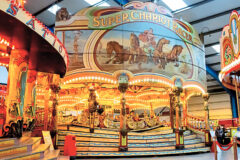
Previous Post
More from the amazing Dingles Fairground Museum
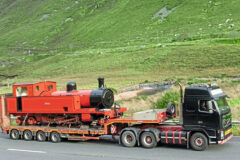
Next Post
Greenway threatens heritage steam railway plans



